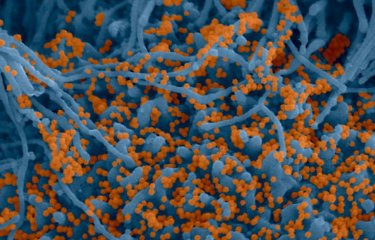-
Article | 2024.02.01
Bourses de la Fondation Pierre Ledoux Jeunesse Internationale
Bourses cofinancées par la Fondation Pierre Ledoux Jeunesse Internationale (séjour) et la Direction Internationale de l'Institut Pasteur (voyage) pour effectuer un stage dans les laboratoires d'un institut du Pasteur Network dans un pays en développement.
-
News | 2023.05.23
Creation of an European Biocluster for Emerging Infectious Diseases
The project "Infectious Diseases Cluster" (IDCluster) has been selected for the Healthcare Innovation 2030 plan. This strategy aims to strengthen biomedical research in France. Coordinated by Lyonbiopôle and supported by the Auvergne-Rhône-Alpes region, this European-scale cluster aims to accelerate progress in the field of emerging diseases, by working with the Institut Pasteur among others.
-
News | 2022.12.27
Bicentenary of Louis Pasteur's birth: looking back on a year of commemorations
Two hundred years ago, on December 27, 1822, Louis Pasteur was born in the town of Dole, in the Jura region of France. The year 2022 was an opportunity to celebrate Louis Pasteur's scientific and cultural legacy and to give people a chance to discover – or rediscover – his life and work.
-
Portrait | 2025.03.06
Benoît Chassaing: Harnessing the microbiota to improve health
Ever since he was little, Benoît has always been fascinated by science experiments. He was a "first-generation college student" – no one in his family had been to university before –, and step by step he worked his way up to a career in research.He is a natural-born educator who is passionate about his subject, and he wants science to be open to everyone.
-
News | 2025.03.08
A collective effort for the Wikipedia pages of women scientists
On February 7, 2025, the Institut Pasteur and the les sans pagEs association organized their very first Editathon – a collaborative workshop on the Wikipedia encyclopedia – dedicated to women scientists. The aim of this event was to bring the contribution of scientists out of the shadows by creating and expanding Wikipedia pages. A fine collective effort with tangible...
-
Vidéo | 2025.03.20
Mini-organs for science!
Hair-sized mini-brains and mini-lungs... Welcome to the fascinating world of organoids!These 3D structures, created in the laboratory from stem cells, mimic the functions of real organs. A major asset for understanding brain development, testing treatments or studying infection by viruses such as SARS-CoV-2.Thanks to scientists like Barbara Fonseca, a researcher at the Biomaterials and...
-
News | 2025.03.12
A step closer to understanding our immune system to improve therapies for chronic inflammatory diseases
The Institut Pasteur, in collaboration with Johnson & Johnson Innovative Medicine Research & Development, uncovers the interactions between a molecule (the cytokine interleukine-23 (IL-23)) produced by the immune system and so-called mucosal-associated invariant T (MAIT) cells, which are involved early in the immune response to fight pathogens. Chronic inflammatory diseases are...
-
News | 2024.10.08
Can lymphoid organs-on-chip be used to evaluate the effectiveness of booster vaccines?
Researchers at the Institut Pasteur, a Carnot-labeled institute, have developed an innovative technology: "lymphoid organ-on-chip" devices that are capable of simulating the human immune system’s response to booster vaccines. This breakthrough could provide a versatile preclinical system to evaluate vaccine candidates in the face of rapidly evolving pandemics such as that caused by the SARS-CoV-2...
-
News | 2025.03.18
Enodia Therapeutics, a spin-off from the Institut Pasteur, develops new approach for targeted protein degradation
The Institut Pasteur, a Carnot institute since 2007, and the start-up studio Argobio announced in February 2025 the launch of Enodia Therapeutics, a groundbreaking French biotech company dedicated to block and degrade disease-causing proteins for treating cancer, inflammatory diseases and viral infections. The platform leverages state-of-the-art generative artificial intelligence (AI) to design...
-
Article | 2025.03.19
People at the heart of our mission
The Institut Pasteur puts people at the heart of its mission, in the firm belief that excellence in scientific research is achieved through the commitment of individuals and the support of those who believe in its work. This involves valuing each and every one of our employees, from scientists to administrative and technical staff. Every member of our community contributes to the success and...


